Soviet "whales" Claude Dornier. Part I
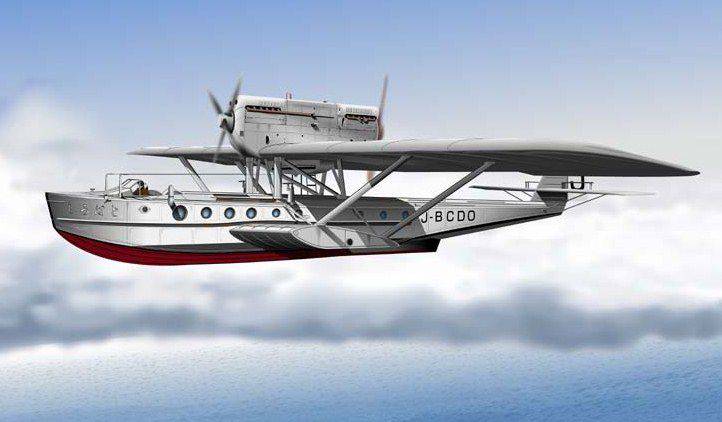
"Val" in translation from German - "whale". This flying boat, designed by the famous designer Claude Dornier in 1920, is rightly considered one of the truly outstanding aircraft. Launched in production in 1922, the Val entered the arsenal of many countries, was actively used by civil aviation from the tropics to the Arctic ice, demonstrating high operational reliability, good seaworthiness and high carrying capacity. A significant role was played by these seaplanes in domestic aviation.
In the second half of the twenties, the domestic seaplane was in a serious crisis. On the fleets there were practically no modern seaplanes. In the Baltic, they used mainly German float Ju-20s, produced at the Junkers plant in Filevsky, in the Black Sea - rather outdated Savoy C-16bis flying boats. These machines had insufficient range, were poorly armed, and badly worn out. float variants of land vehicles, such as the MU-1 and MP-1, could not correct the matter, because they also had a small range of action, and in addition were disgusting seaworthiness.
The fleet was essentially blind, not presenting the situation off the coast of potential adversaries. Needed was a new long-range reconnaissance aircraft that would be able to work in the open sea. But the prospects for its creation in domestic factories have not yet emerged. The only "achievement" of the national hydroaviastro by this time was the boat M-24 D. P. Grigorovich. Obviously unfortunate, it was considered suitable only for use for educational purposes. The design of other domestic seaplanes was conducted, but there were no real results yet.
"It is necessary to ascertain the fact that under the present condition of the available material part, the Black Sea aviation will be able to fulfill the fleet’s operational tasks only to a small extent. The decrepitude of the Savoy 16bis flying boats allows you to use the Savoy aircraft only a short distance from the coast. Thus long-range reconnaissance is not provided with airborne surveillance, "said the head of the Red Army Naval Forces in 1926.
For this reason, at the beginning of August 1925, the Air Force Command (which then included fleet aviation) asked the Soviet Embassy in Germany to “sound out” how the Dornier Metallobuten company would react to the proposal to sell our country 20 'Valley' The German response came very promptly. On August 19 Moscow received a proposal with specific deadlines, the technical characteristics of the options offered and the cost under various delivery conditions.
It was decided to purchase two copies for testing in the Soviet Union, after which a further decision was made. In early September, the Directorate of the Air Force sent a telegram in Germany to the trade mission in Germany to allocate funds for the purchase of two boats, and on October 20 the order N211 was already issued (also known as DE-55). Along the way, our military asked how much cheaper an order would be if we take 12 planes right away. But the discount did not seem to pay off the risk, and eventually settled on the original version.
Since the Versailles agreement forbade the construction of aircraft of this class in Germany, the Germans carried out only design modifications of the flying boat under Soviet requirements, and the assembly of cars was to be conducted by a branch of the company in Italy, in the city of Marina di Pisa.
For the prototype, they chose “Vali”, built on the order of Chile, but there were quite a few differences from them, primarily in terms of equipment and weapon systems. On these planes it was supposed to install English machine guns, French turrets and photographic equipment, Italian radio stations, and even instruments - generally “from pine forest” - German watches, English compasses, etc.
The main difference from the "Chileans" steel engines "Lorrain-Dietrich" 12Е, three-row W-shaped with water cooling, power 450 hp The choice fell on them, it seems, because of cheapness, but, by no means, not because of high characteristics. Similar engines were mounted on the Farman, Goliath bombers bought by the UHVS, and they were going to be put on the R-ZLD reconnaissance aircraft. Ours first aimed at the Liberty or Eagle engines, which appeared in Dornier’s proposals, but then preferred Lorrain-Dietrich.
According to the approved conditions, the aircraft was considered as a long-range reconnaissance aircraft with a crew of three (later four) people. The fuel supply should have been enough for five and a half hours of flight. Two Lewis machine guns with ammunition from 20 stores (each with 47 ammunition) made defensive armament. According to those conditions, it was established that the airplane reached a maximum speed of 190 km / h while landing less than 85 km / h, the practical ceiling was installed in 4200 m.
Soviet copies of "Valei" at the plant in Marina di Pisa received 56 and 57 numbers (the last Chilean with Eagle engines had the number 55). Under the contract, the seaplanes were required to pass the summer 1926 year. This is what happened. In July, the assembly of cars was finished, and on August 2 the aircraft with the number 56 took off. It was originally planned that August 15-16 both cars will fly to the USSR. But only 17-18 of August after testing "Wali" received the necessary certificate of the Ministry of Aeronautics of Italy. Machines prepared for departure, but there were diplomatic obstacles - the planes did not let the Greeks or the Turks through their airspace. Already gathered to disassemble the "Wali" and in the boxes to send to Odessa, but finally the diplomats agreed on the route and you can start the flight.
26 September 1926, both cars successfully reached Sevastopol. Aircraft led Italian crews. One of the directors of Dornier, Schulte-Frolinde, and a couple of employees of the Soviet trade mission in Milan who participated in the preliminary acceptance of the flying boats at the factory arrived with Valyami. The final acceptance took place in Sevastopol in early October.
New boats aroused great interest among Soviet aviation specialists. An entire delegation from TsAGI arrived with the director G.A. Ozerov, V. Samsonov arrived from OMOS, two engineers were seconded from the GAZ-5 plant, and later the company director himself joined them. The commander of the aircraft was the head of the Black Sea Air Forces, V.K. Lavrov, the second pilot was an experienced pilot Rybazhul.
Overall rating "Valya" was very high. The pilots said: "The plane was made very carefully. The metal seaplane was much better than the Junkers. The access to the engines is good, the mechanic is between them during the flight and can even do some repairs if necessary. The plane turns well. Machine control simple and easy and does not require more attention as needed to control an ordinary heavy aircraft. "
But not everything was so smooth. The maximum speed prescribed by the technical conditions was never achieved, in fact, we got 167,8 km / h. Moreover, the pilots noted the sensitive vibrations of the power plant. Representatives of the Dornier first tried to blame everything on engine wear, but when Lavrov offered two new engines from the warehouse, they quickly went back down. As a result, it turned out that the propellers do not correspond to the "Lorrain-Dietrich" motors. Since no one had previously ordered airplanes with LD 12Е, the Dornier did not perform any work on debugging such a motoinstaller. The screws "Heine", installed on airplanes No. XXUMX and No. XXUMX, were intended for the Asso engines and on the Soviet Wali, they were installed only because they turned out to be the most suitable of what was available. The selection of screws for LD 56 was hampered by unusually high, for the twenties, working turns of the French engine - 57 rpm (for example, Eagle had 12 rpm, and Lion - 1850 rpm).
In Sevastopol, French Levassor screws were mounted on one of the airplanes. With them, the level of vibrations decreased and the speed also increased slightly - to 180,5 km / h. They found the English metal propellers "Fairy Reed". This time the speed was 187 km / h, and the flight altitude rose to 3435 m, which was already close to the parameters of the task. Regarding the vibrations, the Germans assured that their level does not pose a danger to a solid all-metal aircraft.
As a result, the flying boats were “conditionally accepted”, while the company was presented with a number of requirements, the main of which was the sending of new propellers. Both "Valya" was put into operation in the Sevastopol 60 th squadron. The pilot Romashkin commanded her. The squadron was assigned mainly training tasks. It was necessary to prepare more crews for flights on the Valya, as well as to accumulate experience in operating these aircraft.
In December, the new screws promised by the Germans arrived in 1926 from Italy, but in fact they turned out to be even worse than the old ones. As a result, they decided to order special screws from TsAGI, with which 27 of December entered into a corresponding agreement.
The appearance of "Valey" on the Black Sea Fleet immediately aroused unhealthy interest from various organizations that immediately tried to "intercept" the flying boats from the military. So, in February, 1927-th one plane requested for the Arctic expedition. The car was already prepared for transfer, but at the last moment the order from Moscow was changed and two smaller aircraft were taken to the north (C-16bis and U-13). In December, 1926-one "Val" tried to transfer to the Far East, but here Lavrov managed to defend the interests of the Black Sea.
Meanwhile, the Sevastopol pilots mastered German technology. By November, 1926 had finished training the first three pilots who flew out of the Vala on their own. Great nagging vibrations. Despite the assurances of Dornier specialists that they were harmless, they regularly caused motor vehicle failures. For three months of intensive use, the carburetor brackets broke six times from shaking, the hood mounts five times, the gas lines and the control rods broke several times. R.L. Bartini, who at that time was a senior engineer of the squadron, using home-made devices, tried to grope resonant modes and, as a result, was able to determine the area of critical speed. But this, of course, was not a cardinal solution to the problem.
In mid-April, 1928 of the year on the Vala No. 57 comparative tests of various types of propellers were organized. Pilot V.V. Volyn in the air tested nine types of French, English, German and domestic screws. The best were the metal propellers "Fairy-Reed", followed by the propellers of the TsAGI design. On them and stopped.
In the autumn of 1927, the decision was made to transfer four float South-1 from the Black Sea to the Baltic Sea, but in January 1928 of the year, the UHVS changed the distribution order, ordering to send three South-1 and two Valya. The route ran through Rostov, Stalingrad, further up the Volga to Nizhny Novgorod, and then, through Yaroslavl and Shlisselburg. The ultimate goal was Leningrad. The flight took place from 20 to 24 in May 1928 of the year. But then only one "Val" flew to the north, the second was faulty. After the repair, this second machine was finally used to test the most perfect then, German Hertz-Boykov Bomb Sight BL 200. It overtook the Baltic in August.
In the Baltic Fleet, "Vali" entered the 66 squadron stationed in the Leningrad Rowing Port. In the Baltic, the German flying boats were positive. "Long-range reconnaissance aircraft" Dornier-Val "have a payload and armament that fully meets its purpose, somewhat inferior in some respects to foreign aircraft of a similar type in horizontal speed and ceiling, but having a significantly shorter flight duration"
"Vali" at times showed fantastic reliability. In the autumn of 1929 of the year, during fleet maneuvers, the plane No.57 stormed by a gale from 150 m and hit the surface of the water of the Gulf of Finland. And after that, the pilots Konkin and Ostretsov managed to start the motoinstallation and safely navigate to the coast.
Airplanes, made in 1926 year and intensively exploited, by the end of 1930-th were already rather worn out and flew less than they were in the workshops. The same unlucky (or lucky) machine №57, during 1929 of the year, suffered four times an accident (mainly due to the engine). As a result, in 1931, “Vali” with “Lorrain” engines were transferred to “Group B”, i.e. restricted their use to auxiliary targets only and returned to the Black Sea.
By this time, the next generation of the already-modernized Vali had been exploited in Soviet aviation. Testing the first two flying boats revealed a number of shortcomings. The main power unit was criticized. Flipped by cheapness, officials from the UNHCR ordered a Lorrain-Dietrich, ignoring the obvious flaws of this engine. “The Lorraine-Dietrich motors have no merit and were taken for supply in vain,” the NTK report stated.
It was planned to replace LD 12 with a Liberty pair. Despite some loss in total power, these engines had better efficiency, which allowed to reduce the fuel supply, and according to estimates promised even a slight increase in speed. Subsequently, the more promising German VMW VI engines, scheduled for production in the Soviet Union, were selected.
According to the experience of testing, Soviet engineers proposed to refine the design of the flying boat and weapons. In order to improve the seaworthiness, it was proposed to raise the nose to 25 cm; in order to reduce the possibility of damage to the bottom of the boat, it was recommended to install wooden bars on the bottom in shallow water; in order to increase the zone of firing, the tail turret was advised to make it as on Argentinian ramparts, rolling from side to side. The cockpit was subjected to criticism, our pilots found them cramped to work in the winter - at that time they were sent to fly in bulky coats and felt boots. For example, a fur coat interfered completely with “taking over” the helm column during takeoff. Some claims have arisen on the dashboard, the quality of manufacture of individual parts.
With this in mind, we have prepared a new contract for the purchase of 20 hydroplanes. New aircraft were badly needed by naval aviation. 9 May 1927 of the year NTK UVVS approved the final technical conditions for acceptance of the new batch of "Valey". Provided for the strengthening of the frames at the main redan; nose profile change, the nose rose a little, which ensured takeoff and landing at a wave up to 1,5 m; an increase in the area of the dural lining of the center section. The tail section of the hydroplane was extended, the shape of the vertical tail unit was changed, and the automatic mooring lock was mounted (these differences then appeared on all Valyah, not just the Soviet order). Due to the increase in weight (the maximum take-off should have reached 6770 kg), despite the increase in engine power, the maximum flight speed did not increase much and, according to calculations, should be equal to 195 km / h. The weight was raised primarily by bombs; if the Lorraine variant carried four 82 kg bombs or eight 32 kg bombs, then the new one should have taken two 250 kg and four 80 kg. Large-caliber bombs were hung not to the bomb racks on the sides of the fuselage, as before, but to the "gills" of the boat. Aiming was carried out with the help of an optical sight "Hertz".
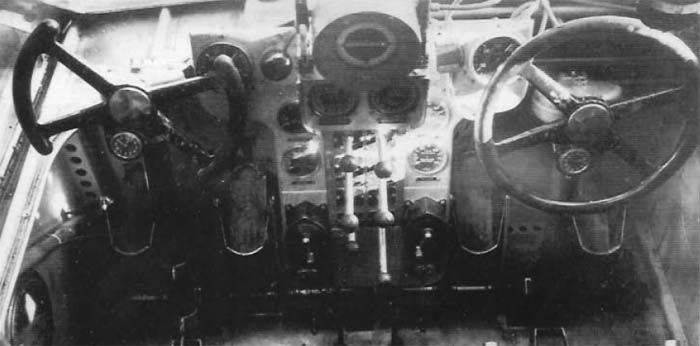
Defensive armament did not change, only the tail turret was now rolling. It was planned to equip all the cars with a planned Kodak camera. On the first two aircraft with "Lorrain-Dietrich" apparatus was not - our specialists did not have time to send the company drawings. There were no radio stations on them - they decided to save money. Bona fide Italians laid masts and antennas among the spare parts - maybe they would be useful (and really useful). Now, the radio decided to put right in Italy. For the Soviet cars were chosen "Marconi" AD-6F.
Engines planned type VMW VI E6.0 600 horsepower These were 12-cylinder V-shaped water-cooled motors. Special wooden propellers (front - four-bladed, rear - two-bladed) were to be made for them. Bearing in mind the problems with the screws last time, separate technical conditions were prepared for their acceptance, which are very detailed and rather tough. Separately purchased and motors. They were not included in the total cost of the order, they were received by representatives of the Air Force directly at the VMW plant and then sent to Italy.
It was envisaged that the Soviet side would also provide cameras, sights, Der-3 bomb racks (for 80-kg bombs), SBR-7 bombers. All other equipment was planned to be purchased in different European countries: fire extinguishers - German, rescue belts - English, turrets and life buoys - French, anchors and starters - Italian. Regarding the latter; At first, they wanted to buy VMW pneumatic starters complete with engines, then they reoriented to Italian ones, such as Piaggio. They were manufactured under license from the British firm "Bristol" and had their own compressor, while the Germans worked from a cylinder. For a seaplane operating at a considerable distance from the bases, a greater degree of autonomy, of course, was desirable.
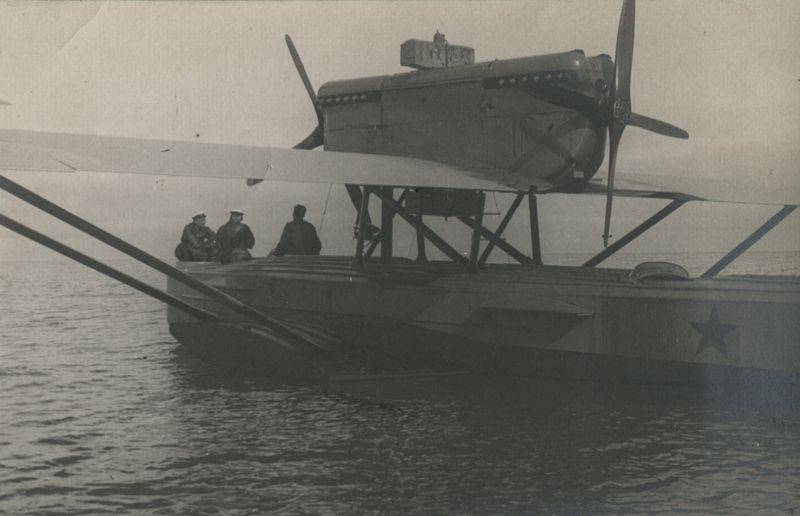
According to the contract concluded by 22 on April 1927 of the year Metalloimport with Dornier Metalbouten, each seaplane (without engines and Soviet equipment) cost 40500 dollars. Fully order priced at 875150 dollars. This cost included spare parts, tools, consumables and a whole aircraft repair workshop. It was envisaged to carry everything from Italy, from rivets and paint, to a powerful crane. Flying boats were scheduled to take two series of 10 pieces.
Samples of military equipment and their drawings were urgently sent to Germany. The fact of designing military aircraft in Germany was carefully concealed. Therefore, the goods were transported in boxes with fake markings, and all correspondence was classified.
Sources:
Kotelnikov V. Flying boat Dornier "Val". SPb .: Gangut, 1995. C. 12-31.
Farina N. The flying boat "Whale" // Model-designer. 1999. No.2. C. 32-36.
Kotelnikov V. Slow, but Reliable // Wings of the Motherland. 1997. No.8. C. 6-9.
Sobolev, D., Khazanov, D. stories domestic aviation. M .: Rusavia, 2000. C. 57-62.
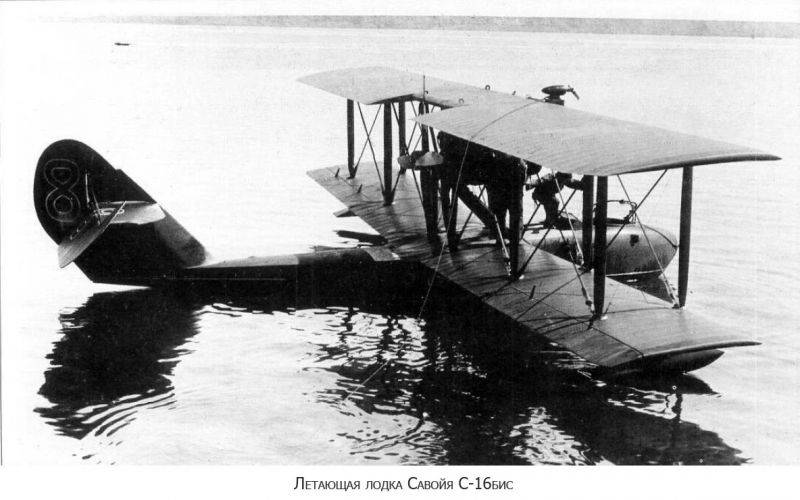
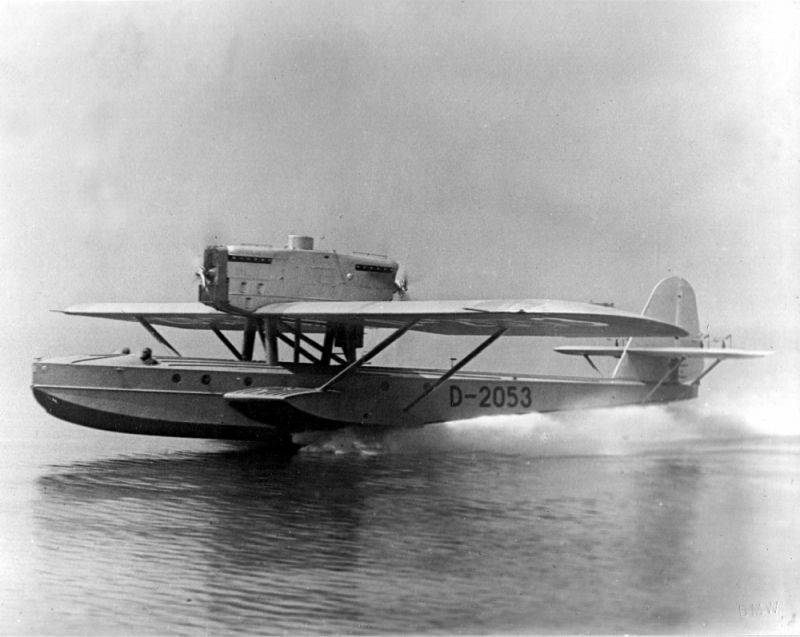
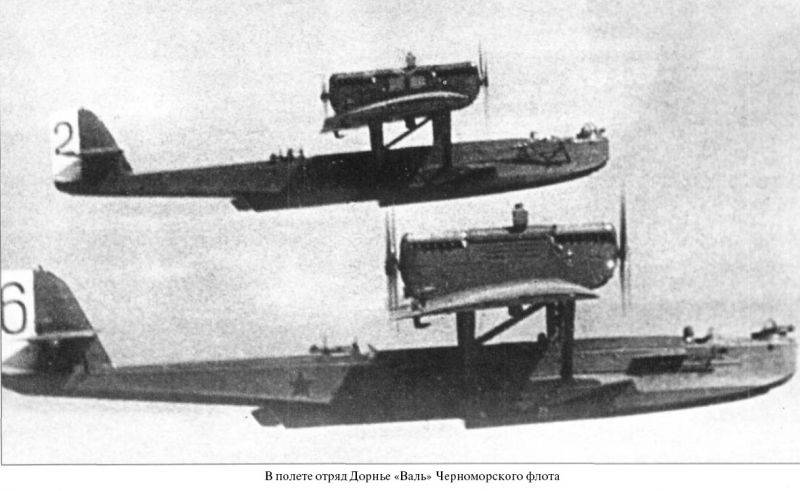
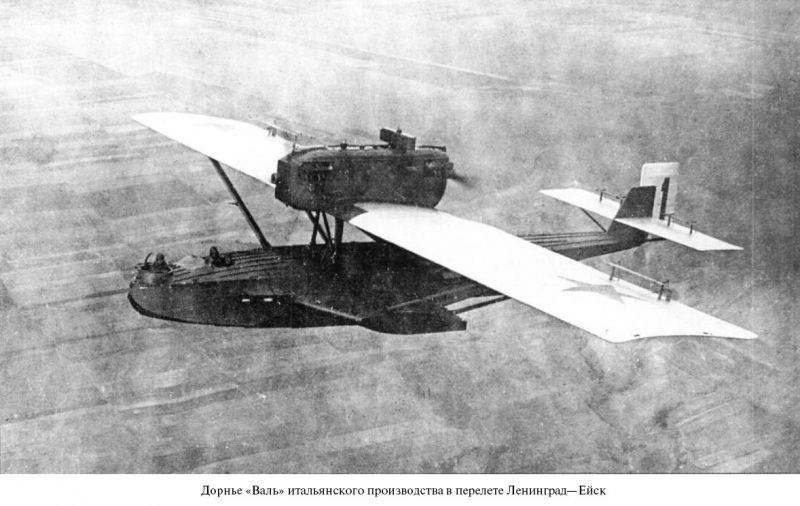
Information